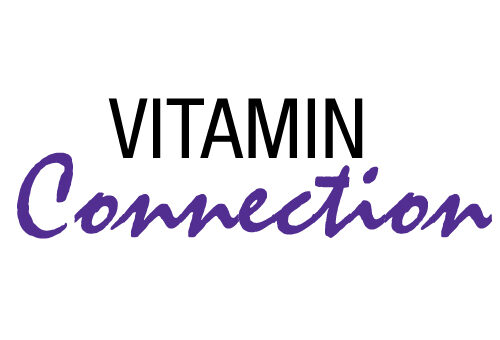In August, we chatted with John J. Cannell, M.D., about the latest research on vitamin D and the flu. This month, we will discuss Dr. Cannell’s hypothesis that vitamin D deficiency is a trigger for autism and other childhood diseases of modern civilization. Vitamin D deficiency cannot be blamed on the mother or the child; it is a normal byproduct of modern living and current medical advice to stay out of the sun. Mankind is no longer an outdoor critter. We essentially live, work and recreate indoors in air-conditioned homes, factories and offices. During our rare exposures to sunshine, smog, clouds, sunscreens and protective clothing filter out most of the ultraviolet energy that our bodies need to manufacture sufficient vitamin D to optimize gene regulation. There is no need to blame anyone for this turn of events, but the good news is that we can correct the problem and halt several of these modern epidemics of childhood—including the “Three A’s” of autism, asthma and autoimmune disorders such as type-1 diabetes mellitus. Many allergies can be added to the list as well.
Dr. Cannell graduated with a degree in zoology from the University of Maryland, where he was a member of Phi Beta Kappa. He received his M.D. from the medical school at the University of North Carolina. After a year-long surgery internship at the University of Utah and four years of practicing itinerant emergency medicine, he began as a general practitioner in the coalfields of Appalachia.
Later, Dr. Cannell left general practice and went back to school to study psychiatry. He moved to Atascadero, CA, in the late 1990s and began working as a psychiatrist at Atascadero State Hospital, the largest hospital in America for the criminally insane. There, his long-held interest in clinical nutrition was re-awakened. The further he studied nutrition, the more and more vitamin D3 (cholecalciferol) caught his attention.
As Dr. Cannell began to study the effects of vitamin D, he immediately realized that the recommendations of the Food and Nutrition Board (FNB) of the IOM were placing many Americans at risk. He found that vitamin D insufficiency was common in older adults, even using conservative cutoff points for vitamin D blood levels. Dr. Cannell was left wondering whom he should believe: Nature or the FNB? In 2003, he recruited professional colleagues, scientists and friends for a board of directors and took the steps necessary to incorporate The Vitamin D Council as a tax-exempt, nonprofit, 501(c)(e) corporation.
In September 2006, Dr. Cannell’s seminal article, “Epidemic Influenza and Vitamin D” was published in the journal, Epidemiology and Infection. The article presented a revolutionary new theory on vitamin D’s link to influenza and was co-written with some of the world’s top vitamin D experts.
Passwater: You mentioned you were an admirer of Dr. Robert Edgar Hope-Simpson because of the brilliant manner in which he could analyze facts about the incidence of diseases and elucidate their real causes. You have proposed a very reasonable hypothesis about the etiology of several modern diseases and vitamin D deficiency. Last month, we discussed the compelling and convincing evidence in support of your hypothesis that vitamin D is protective against influenza. This month, we will discuss your observations that indicate vitamin D deficiency is a trigger for autism and other childhood diseases of modern civilization. But first, I want to explore how your thinking—like that of Dr. Hope-Simpson’s—pieces the facts together and gleans what others have missed.
Please tell us more about how you pieced together the etiology of influenza and vitamin D deficiency for your seminal paper in 2006. There is a great similarity between your approach to influenza, autism, asthma and autoimmune disorders such as insulin-dependent diabetes mellitus. You have pointed out that these are the “triple-A epidemics” now raging among our children.
In Part One, you stated that in your opinion, vitamin D deficiency during pregnancy and early childhood is the principal trigger of these “Triple A” diseases that have increased so dramatically among our children.
Cannell: As I mentioned last month, I had been routinely giving all of my ward patients vitamin D supplements to help with their general health. It then became obvious to me no patient in my ward or caregivers developed influenza in spite of the epidemic in all the other wards. Influenza is not always just a miserable case of the flu; it can spread quickly and kill thousands. So, I began thinking about vitamin D and influenza. I had extensive knowledge of vitamin D biochemistry, but little more knowledge about influenza than what is taught in medical school.
I then started reading the medical literature in depth, everything I could find about influenza. When I read the epidemiology of influenza papers especially, it just fit!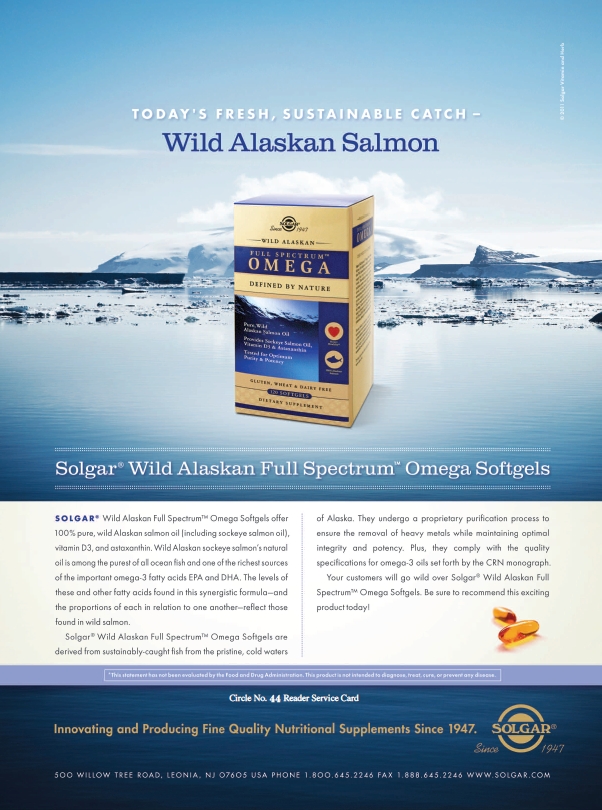
Blacks were more likely than whites to get influenza. Blacks were more likely to get sicker when they got the flu. The closer to the equator you lived, the less likely you were to die from influenza. The further away one lives from the equator, the more severe the attacks. The epidemics come in the wintertime and go away in the summertime. People who get more sun exposure don’t get as much influenza. Everything fit!
But all of these observed facts had been explained away in different or alternative ways. Children with rickets frequently get influenza. That was explained away as being because their rib cages were too soft. Or, that people got more influenza in the winter because they were in closer contact. Every one of these observed facts that I read about had a different explanation. All 20 different facts had 20 different explanations, but vitamin D deficiency explained each and every fact. It is a key observation when one thing explains all observed facts. It is a parsimonious theory when one thing explains all the facts.
Passwater: It definitely increases the probability that the theory is correct.
Cannell: After I realized the relationship between vitamin D deficiency and influenza, I started thinking about autism in the back of my mind as well.
Passwater: The two diseases are strikingly different. It would be surprising if they have the same trigger or co-factor. We all know what influenza is, and most of us think we know what autism is. But, for the record, just what is autism?
Cannell: Autism is just one disorder of a group of similar disorders called Autism Spectrum Disorders (ASDs). ASDs are a group of developmental disabilities characterized by atypical development in socialization, communication and behavior. ASDs typically are apparent before age three, with associated impairments affecting multiple areas of a person’s life. Autism affects both the brain and body of young children. No biologic marker exists for ASDs, thus identification is made by professionals who evaluate a child’s developmental progress to identify the presence of developmental disorders.
In 2009, approximate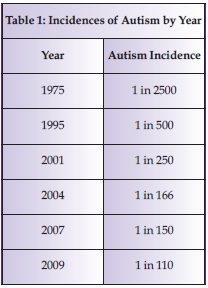 ly 1% of all children or one child in every 110 was classified as having an ASD. This percentage has been increasing steadily over the years as shown in Table 1 and Figure 1.
ly 1% of all children or one child in every 110 was classified as having an ASD. This percentage has been increasing steadily over the years as shown in Table 1 and Figure 1.
I’m a psychiatrist so I knew quite a bit about autism. I could see that some of the observed facts about autism also were explained by vitamin D deficiency much like influenza was.
My current patients were adults, so I had to catch up on the more recent medical literature on autism. Again, I found that observed fact after fact fit the vitamin D deficiency hypothesis. There is an increased prevalence of autism with increasing latitude. Autistic children tend to be less symptomatic in the summertime and more symptomatic in the wintertime. Black children are more likely to be autistic than white children. Somali immigrant children to Minnesota and Sweden were much, much more likely to get autism than those in their native country. People with more sun exposure were less likely to get autism. There was a seasonal variation that children born from a winter’s gestation were much more likely to get autism than children born from a summer’s gestation. Mothers who are in higher socioeconomic incomes with higher education are more likely to have a child with autism. That’s always been a mystery. In most diseases, that’s usually the opposite. The poorer you are and the less educated you are, the more likely you are to get a disease.
Passwater: Yes, that is surprising. What is the link?
Cannell: What’s the group of people most likely to put sunblock on their children and most likely to avoid the sun?
Passwater: The rich and educated. I now see the link, too. Would that also explain why there seems to be an association, like with Down’s syndrome, between the mother’s age and incidence of autism? Don’t older mothers also tend to be better off socioeconomically and educated more to use sunblock, etc.? Some may be career women who postponed childrearing until a later time and they became vitamin D deficient while working indoors.
Cannell: Bingo! I suspect older women are richer and more likely to use sunblock, but I am unaware that this has been proven true.
When I first proposed my theory on vitamin D deficiency and autism, I proposed it on my Web site (1) before I published it in a peer-reviewed scientific journal (2). It just went nuts!
The mercury immunization theory backers sent me hate mail. I had never seen anything like it before, especially since I was proposing that if you get these children on adequate amounts of vitamin D supplements quickly enough, you may be able to protect their brains. It was incredible.
One thing that people should realize is that if you have a child with autism, statistically speaking, your family is in more distress than if you have a child with a fatal illness. It is an incredibly disruptive disease to family life. It’s not just the child banging his head on the TV set or screaming at three o’clock in the morning. It’s the worry of what’s going to happen to my child when I’m gone.
Then, the immunization/vaccine theory came out and it helped these parents because it absolved them of blame. The immunization theory meant that these parents could say that it was nothing that they did wrong. It was Big Pharma and the medical system and the vaccine industry that did this to my child. “I didn’t have anything to do with it—they did it. I didn’t do anything wrong.” This is a very important thing to  believe if you have a child who has a disease as serious as autism.
believe if you have a child who has a disease as serious as autism.
My vitamin D deficiency theory is a little bit different. My theory says that if the mother had gone out and sun bathed, her child wouldn’t have autism. Mothers could easily see that idea as “blame the mother.” But, of course, if she had gone out and sun bathed while she was pregnant, she would be violating all of the advice given by every major medical organization in the world. Mothers should not blame themselves! They’re only doing what the doctors told them to do. It’s not their fault at all.
In large part, due to autism, I predict that the advice given by the American Medical Association in 1988 to always avoid the sun unless you are wearing sun block will turn out to be the worst medical advice ever given in the history of mankind!
I say that because there has never been blanket advice given that has caused so much death and suffering as that advice.
Passwater: Doesn’t a study of multivitamin use and autism give some support to your theory? The study showed that prenatal multivitamins, which typically contain 200–400 IU of vitamin D, reduced the incidence of autism (3). Women who did not take a daily prenatal dietary supplement three months before and during the first month of pregnancy were almost twice as likely to have children with autism spectrum disorders, compared to those who started such a supplementation schedule early.
Cannell: Yes, that study just came out and fits perfectly, although the authors seemed convinced folic acid—an epidemiological impossibility—is the 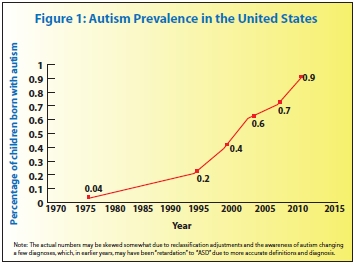 cure. Increasing folic acid fortification in food was instituted in the late 1990s with no decrease in the incidence of autism.
cure. Increasing folic acid fortification in food was instituted in the late 1990s with no decrease in the incidence of autism.
The reason that I am so interested in autism is because I keep getting letters from parents who have given their autistic children adult doses of vitamin D supplements and mother after mother write in and report to me that their child improved. They use terms such as “a switch goes off.” My Web site includes four or five of those letters.
One mother had three children with autism. She has twin daughters who are eight years old. She became pregnant again before she knew her twins had autism. All three of her children have autism; two severely afflicted eight year olds and one less afflicted five year old. After three months of vitamin D supplementation, the mother has seen dramatic improvement.
Passwater: Thanks so much for sharing with us the process by which you elucidated your theory, but by now, I’m sure some of our readers are wondering, “How can vitamin D have an effect on what is considered a genetic disease?”
Cannell: Genetic diseases include the failure to properly regulate the genes, and as we’ve discussed a couple of times, vitamin D works by directly regulating about 1,000 human genes, which is about 5% of the human genome. The human genome contains more than 2,700 binding sites for 1,25-hydroxy vitamin 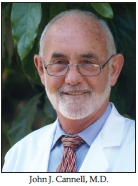 D; those binding sites are near genes involved in virtually every known major human disease. Nearly every cell in the brain has vitamin D receptors. The receptors control gene expression or how genetic material is used. Therefore, vitamin D may have many beneficial effects for the brain. Without vitamin D, those genes literally do not know what to do. They don’t know whether to increase or decrease the production of their particular enzyme or other protein. Vitamin D can turn a gene on or off. The genes don’t perform correctly without vitamin D.
D; those binding sites are near genes involved in virtually every known major human disease. Nearly every cell in the brain has vitamin D receptors. The receptors control gene expression or how genetic material is used. Therefore, vitamin D may have many beneficial effects for the brain. Without vitamin D, those genes literally do not know what to do. They don’t know whether to increase or decrease the production of their particular enzyme or other protein. Vitamin D can turn a gene on or off. The genes don’t perform correctly without vitamin D.
Passwater: While we’re at it, let’s discuss the conventional wisdom that considers autism a genetic disease. Hasn’t a recent study shown that even though there is a large genetic component in that several gene variants have been associated with autism, there is a larger environmental (non-genetic) factor than previously thought? Here, the use of the word “environmental” includes nutritional factors and possibly metal toxins (4).
Cannell: Yes, a study of twins in California downgrades the role genes play in autism identifying a large environmental role.
Passwater: Your theory suggests that vitamin D deficiency is an indirect “trigger” to produce autism, whatever the direct cause or causes of autism may be. Does your theory recognize or include any other possible triggers of autism as well (and if so, would vitamin D still be of benefit if there were other possible triggers)?
Cannell: Yes, anything that would stress the immune system like toxins or infections is a trigger. So, toxic doses of mercury would be a trigger.
Passwater: Would vitamin D be of help even when the trigger involves other immune system stresses?
Cannell: Yes, vitamin D makes the immune system smarter. Autoimmune disorders are, by definition, the result of dumber immune systems.
Passwater: If vitamin D deficiency is a trigger for autism, could vitamin D supplements become a treatment option for children who have already developed autism? You report that vitamin D supplementation in sufficient dose has improved existing cases of autism. So, it’s not too late to modify any genetic predisposition to autism even after autism symptoms appear. How long is that window of opportunity? Is there a period of time after which it would be just too late for vitamin D supplementation to help?
Cannell: Autism is an ongoing, destructive, inflammatory autoimmune type of disorder that injures the brain. The sooner the vitamin D deficiency is treated, the more likely the child will have a more normal life!
Passwater: What if the child is seven years old and has been diagnosed as autistic for six years? Is that too late?
Cannell: First of all, everything I am saying is simply my observations from unscientific data. I can’t publish these case reports because they are not my patients. I can’t document that these kids actually improved. I can only document that the mothers told me they improved. I have set up a free clinic in the next several months in which I will be able to see children with autism and consult with their parents about vitamin D needs and get the children on the right amount of vitamin D. In addition, a study is underway at a major medical school (University of California, San Francisco) giving high doses of D to autistic children. This study needs another $9,000 to be completed and another $80,000 if a controlled trial seems indicated from the open study. Those who give may well be able to say they helped fund the seminal study in autism.
Passwater: Still the activist, especially for the poor and underprivileged, I see.
Cannell: In September 2011, the Vitamin D Council began this free clinic for children with autism. My time is free, the autism assessment scales are free, the blood tests are free and the vitamin D for the kids is free (due to the generosity of Ddrops). We estimate three to four clinic visits will be needed. Anyone in the world with a child with autism can call and get an appointment to see me. The Vitamin D Council will sponsor this clinic as long as we can afford it, which means as long as we have enough donors, members and especially enough lifetime members. From now on, a lifetime membership also means that such membership sponsors one autistic child to come to the free clinic and we will encourage that family (if the donor wants) to call and thank the donor in person.
We are taking a risk, as our financial situation is—as it is too often—precarious. In order to have a free clinic, we must hire an administrative assistant to organize and help with the free clinic. At this time, I am unable to get a salary from the Vitamin D Council for my time. However, we still have to pay a full-time web director, a science advisor and a controller and we made a commitment to fund the preliminary study on autism and vitamin D by the University of California at San Francisco. It would be nice if our readers would consider donating or joining as members. Please remember that our newsletter is free no matter if you join or not (www.vitamindcouncil.org).
Passwater: It is positively a good cause that can help improve the lives of so many people. But, let’s go back and clarify a point. Right now, would you suggest to the mother of any autistic child that correcting the child’s vitamin D level would be a positive step?
Cannell: There’s no scientific evidence yet published that suggests that vitamin D would have a treatment effect in autism. However, as the person who first proposed the theory, it is my belief that vitamin D does have a treatment effect on autism and I base this solely on what parents are telling me. I further predict that the treatment effect will be modulated by several factors. The more severely affected the child, the less likely there will be a significant treatment effect. Secondly, the older the child, the less likely there will be a significant treatment effect. The more vitamin A or cod liver oil, the less likely the effect. However, if I had an autistic child who was 25 years old, I would make sure his or her vitamin D level was adequate. That’s the other key thing about autism. For reasons that are entirely unclear to me, autistic children need to have vitamin D levels that are in the high range of normal in order to show improvement.
Passwater: Perhaps, we can go back to your analogy about the lower mountain pools being fed from the higher mountain lakes. Only when the higher lakes overflow will the lower lakes and pools be fed. The vitamin D levels have to be at least high enough to supply adequate vitamin D to the less prioritized needs. Or, maybe it just requires more molecules of vitamin D to overcome the greater number of genetic abnormalities or polymorphism.
Cannell: That’s right, it must be. I’ve seen that when the mothers give their child a couple thousand IU of vitamin D and their 25-hydroxy vitamin D blood levels get up to 40 or 50 ng/ml, the mothers will say that there is a little improvement. But when I suggest 6,000 IU per day, and the child’s blood level is up to 80 ng/ml a month later, then the mother is saying, “Wow!”
For autistic children, I like to get their blood levels up to about 100 ng/ml. For many children, that takes up to 10,000 IU of vitamin D daily.
Passwater: Your elucidation of the connection between vitamin D deficiency and autism is a very important medical contribution. Let’s pause here until next month when we will chat about vitamin D deficiency and heart disease research.
Dr. Cannell, once again thank you for sharing your knowledge of vitamin D and health with us, and for your many contributions across several health fields, but particularly for your elucidation of the connections between vitamin D deficiency and influenza, autism and the three A’s childhood diseases of modern civilization. WF
Dr. Richard Passwater is the author of more than 40 books and 500 articles on nutrition. He is the vice president of research and development for Solgar Vitamin and Herb. Dr. Passwater has been WholeFoods Magazine’s science editor and author of this column since 1984. More information is available on his Web site, www.drpasswater.com.
References
1. J.J. Cannell, “Autism and Vitamin D,” The Vitamin D Newsletter, May 2007.
2. J.J. Cannell, “Autism and Vitamin D,” Med. Hypotheses. 70 (4): 750–759 (2008).
3. R.J. Schmidt et al., “Prenatal Vitamins, One-Carbon Metabolism Gene Variants, and Risk for Autism,” Epidemiol. 22 (4), 476–485 (2011).
4. J. Hallmayer et al., “Genetic Heritability and Shared Environmental Factors Among Twin Pairs With Autism” online July 4, 2011 in the Archives of General Psychiatry.
Published in WholeFoods Magazine, September 2011


